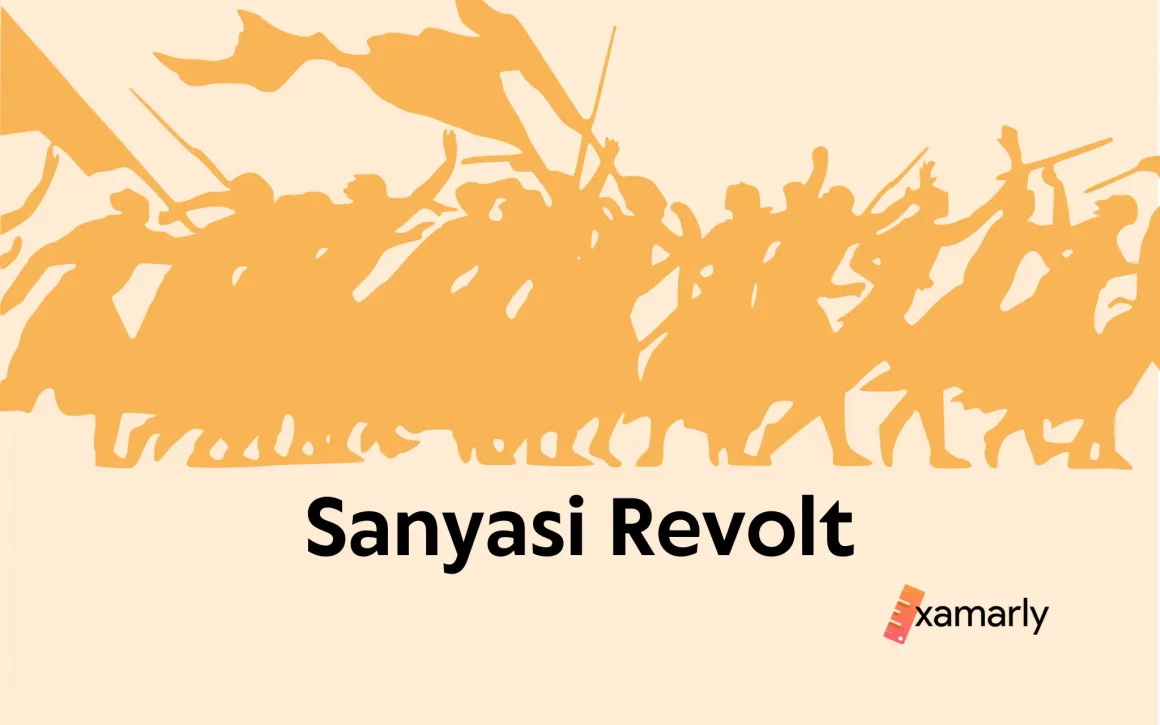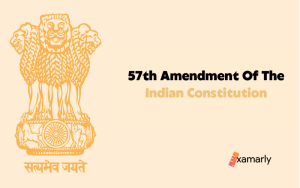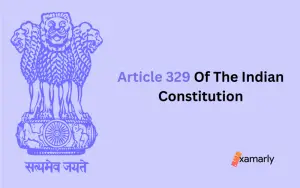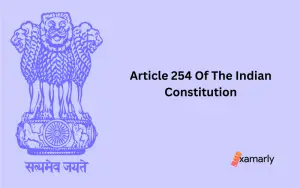The Sanyasi Revolt of 1763 took place in Bengal, India. It was a late-eighteenth-century rebellion led by Fakirs (fakirs who practiced mystical practices), who were known as Sannyasis. The revolt happened in Murshidabad and Baikunthapur forests located in the Jalpaiguri district.
The revolt was led by Majnoo Shah Fakir and Pandit Bhabani Charan Pathak. Being the first of India’s anti-British uprising and is a must-know topic for UPSC CSE.
Read on to know more about the sanyasi revolt for the UPSC exam.
Sanyasi Revolt
The literal meaning of ‘Sanyasi’ is the one who takes the path of spirituality, abandoning all worldly affairs.
Sanyasi Revolt is used to refer to a period in Indian history when a group of people gathered in the forests of Jalpaiguri and declared themselves as free people. The revolt was organized by Hindu Sanyasis and Muslim Fakirs.
Alongside the community suppressions, they also fought against British control and the established East India Company. The Sanyasi Rebellion is a fascinating part of Indian history and literature.
The revolt was started in the late 1760s in a nebulous form and eventually gained momentum in 1763. The resistance was conducted by fakirs with swords, lances, and guns. Other methods included Hawai and revolving cannons. Although the fakirs were generally armed and used weapons of their choice, the villagers also participated in the revolt.
The revolt was a combination of religious and economic powers. The colonial rule had ruined the lives of artisans, peasants, and zamindars in the region, forcing them to sell their products cheaply to the EIC. They had also suffered devastating famines, which prompted the sanyasis to rise up and revolt.
The British had no other alternative but to repress the revolt, so they imposed many restrictions on the Sanyasis’ rights to collect taxes as they were regarded as looters and thugs. This led to widespread suffering for many.
Learn more of UPSC Notes Topics – Asian Infrastructure Investment Bank UPSC
Who were Sanyasis?
This is an engrossing question. The Sanyasi revolt swept across parts of India in 1763 and was immortalized in Bankim Chandra Chatterjee’s novel Anandamath. The Sanyasis were also known as Hindustan’s gypsies, traders, and religious vagrants. Some of them were naga sadhus because they had renounced wearing clothing.
The British looked at the Sanyasis as looters and imposed various restrictions on their lives. While the British administration sought to control the Sanyasis, they were not able to fight back against the rebels. England restricted the Sanyasis’ access to sacred sites, so they plundered the government treasuries and the English factories.
After the revolt, they continued to attack English factories and treasuries. This led to a retaliation by Governor Warren Hastings in 1771. As many as 150 unarmed sanyasis were massacred. The revolution lasted for 50 years, eventually being put down in the 1820s. The Sanyasis, who numbered approximately fifty thousand people, were not without their own supporters.
The freedom struggle was not without its share of struggles. Sanyasis were a key component of these struggles, and many freedom fighters, including Swami Omkarananda, a Sanyasi himself, carried out their struggle from secret hideouts. Several revolutionaries were also Sanyasis later, including Neelakanta Brahmachari, who founded an Ashram near Bangalore.
The life of a Sanyasi is marked by a special allegiance to Shiva. One among the three prominent Hindu gods is Shiva who is also referred to as ‘The Great Ascetic’. Sanyasis are believed to have practiced celibacy and shunned non-vegetarian food. The Sanyasis’ devotion is reflected in their dress. They often wore animal skins and loincloths and used rudraksha seed rosaries to meditate.
The Sanyasis were a body of people who lived in villages that were once fertile. However, the British increased taxes and landlords could no longer pay these traveling holy men. The British regarded the Sanyasis as erratic beggars, dacoits, robbers, and suspicious or lawless mendicants and actively tried to keep them out of Bengal. They severely restricted the Sanyasis’ movements.
This British policy and the subsequent events led to a decline in their number during the British period.
You Might Also Like To Read: Asian Clearing Union
Groups and Commanders Involved in the Sannyasi Rebellion
The Sanyasis were once part of the Rajput and Maratha chieftains and Nawabs belonging to Bengal and Awadh. They fought the British and looted their factories. Some were also executed, as per Governor Warren Hastings’ order in 1771. The Sanyasi Uprising lasted over 50 years. The British repressed it only in the early 1820s. The Sanyasi Uprising shared many similarities with the Faqir resistance. Both groups lived off the alms provided by their followers.
The uprising in West Bengal was the first in a string of revolts. Other revolts in this region include the Chuar Revolt in 1799 and the Santhal Revolt in 1855-56. Bankim Chandra Chatterjee was an ardent supporter of the Sanyasis and wrote many novels in the language. There are also several other historical references to the Sanyasi Uprising in Bengali.
The Sanyasis were opposed to British rule and the ruler’s subordinates. In addition, they tried to take down the Fakirs who would not surrender to them which would then lead to attack on farmers and their families, triggering retaliatory battles and ultimately, the Sanyasi Uprising. In response, the Company’s armed forces were thrown into chaos and violence.
The Sanyasi Uprising was not well-planned and the rebels lacked unity and purpose. Although the rebellion was confined to North India and Central India, the revolt attracted the attention of the British. The displaced Zamindars, peasants, and Fakirs provided the social base and religious fervor for the rebellion. Nevertheless, the British did not tolerate the uprising.
Devi Chowdhurani and Bhabani Pathak
A wise Brahmin and his teenage daughter, Prafulla, who was a widow during the Sanyasi Revolt, are worshiped along with Goddess Kali. Though the two are portrayed as ‘bandits’ in British records, the real story is different. They were members of the revolt, which swept the Bengal Province, Uttar Pradesh, and Bihar in 1763.
The story of Bhabani Charan Pathak and Devi Chowdurani is a tragic tale of love and loss, but a beautiful one. Bhabani Pathak, a knowledgeable, wise, and shrewd Brahmin, was married to Prafulla, the teenage daughter of a poor, widowed Brahmin. Prafulla had earlier wedded Braja, the only child of a zamindar, Haraballabh, but Braja’s family dumped Prafulla after a spat. Her father died shortly thereafter and Prafulla took shelter at Bhabani Pathak’s house. There she got herself educated and learned the art of war.
Prafulla now became Devi Chowdhurani and claimed a vast area of Southern Bengal. She helped many people and lived an ascetic life.
Fakirs and yogis were a significant part of this movement. They led a resistance movement against British power in Bengal. The movement aimed to depose the British and protect the rights of rural people. The local landowners and EIC were the targets of the sannyasis’ anti-British uprising.
This Blog Might Also Interest You: National Flag Of India
Conclusion
The Sanyasi Uprising took place in India’s northwest region in the 18th century. The rebellious movement had two major parts. The Fakirs and the Sanyasis. The Fakirs were responsible for the first part of the uprising. The British had oppressed the Sanyasis, who resisted by forming their own government. Majnu Shah was leading the Fakirs, a group that took a more aggressive stance in the movement.
In the eyes of the Britishers, Sanyasis were mere looters and thus the British government imposed various restrictions on their lives. The uprising lasted for 50 years, eventually being suppressed in the early 1820s. The Sanyasi Revolt is referenced in Anandamath, a book by Bankim Chandra Chatterjee that was banned in Britain.
The British did try to suppress the Sanyasis but they were not able to resist the rebels. The British had also restricted their access to sacred sites. The Sanyasis rebelled against this oppression and looted English factories and government coffers. 150 unarmed sanyasis were put to death in 1771 on the orders of British Governor Warren Hastings. In the years after the famine, there was the Sanyasi Uprising which is also referred to as Fakir Rebellion.
The Sanyasi and the Fakir revolts failed, and the British were forced to implement land taxes that were unfair to the peasants. Titu Mir, a leading member of the Wahabi sect in Bengal, organized the underprivileged peasants during the Barasat Uprising, which formed a movement center in Narkelberia, Barasat.
FAQs on Sanyasi Revolt
Who was the Sanyasi and Fakir leader in 1857?
Nana Sahib was the Sanyasi and Fakir leader in 1857.
Name the prominent leaders of the Fakir-Sanyasi rebellion.
Musa Shah, Majnu Shah (or Majnum Shah), Bhawani Pathak, Chirag Ali, and Debi Chaudhurani were some of the important figures of the Fakir-Sanyasi rebellion.
Who made Sanyasi rebellion famous through his writings?
Bankim Chandra Chatterjee made Sannyasi rebellion famous through his novel Anandmath.
Who was the Governor-General during Sanyasi Revolt?
Warren Hastings was the Governor-General during Sanyasi Revolt.
Which political novel was inspired by the Sannyasi Rebellion?
In 1882, Bengali author Bankim Chandra Chattopadhyay released his historical novel Anandamath. It is regarded as one of the most significant novels in the history of Bengali and Indian literature and is inspired by and set against the background of the Sannyasi Rebellion in the late 18th century. The Abbey of Bliss was the name of the book’s first English edition; Ananda means bliss and Math means abbey.






